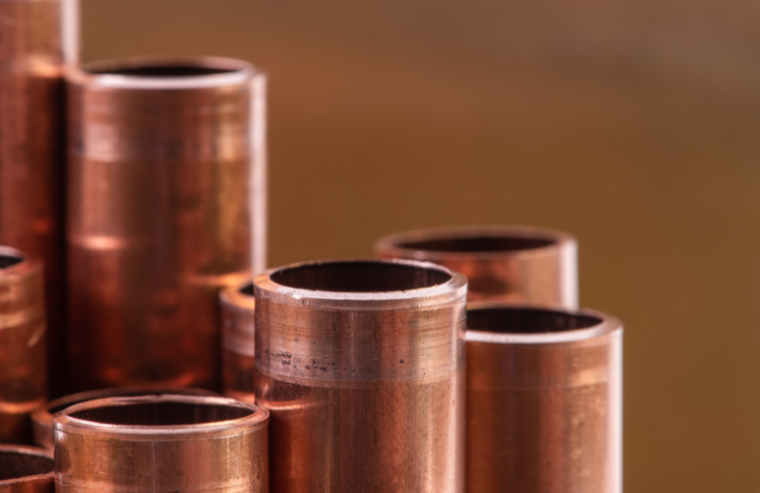New Copper Tariffs Took Effect August 1: Here's What You Need to Know
- Krystal Morrell

- Aug 18
- 3 min read

On August 1, 2025, the U.S. government implemented sweeping new tariffs on a wide range of imported copper products. The move, announced in a presidential proclamation last month, imposes a 50% tariff on semi-finished copper goods—including imported copper tubing, a key material for many of GLA’s customers.
The action follows a federal investigation by the Department of Commerce under Section 232 of the Trade Expansion Act. The investigation concluded that high volumes of copper imports are threatening national security by weakening the U.S. copper industry. In response, the White House has introduced tariffs aimed at rebuilding domestic production and reducing reliance on foreign suppliers.
What Products Are Affected by the Copper Tariffs?
The 50% tariff applies broadly to semi-finished copper products, such as:
Copper tubing (imported)
Pipes
Wires
Rods
Sheets
Tubes
It also covers many copper-intensive components, including electrical connectors, cables, and pipe fittings. According to the official guidance, the tariff applies specifically to the copper content of each product. Other materials—such as plastic insulation or non-copper alloys—remain subject to existing duties and tariffs.
For GLA customers, this means that imported copper tubing from non-exempt countries may now carry significantly higher costs.
What’s Excluded?
Notably, the tariff does not apply to:
Copper input materials, including ores, concentrates, mattes, cathodes, and anodes
Copper scrap
Products already covered under other trade measures, such as automotive tariffs
These exclusions are intended to avoid driving up costs for upstream copper production and to ensure U.S. manufacturers continue to have access to raw materials at competitive prices.
Why Now?
The White House says the action is necessary to strengthen the U.S. industrial base. The Department of Defense identified copper as its second-most used material, critical for everything from military vehicles and submarines to power infrastructure and ammunition.
According to the Section 232 investigation, foreign producers—particularly those operating under state control or with heavy subsidies—have undercut U.S. suppliers for years. Combined with heavy environmental and regulatory burdens at home, the U.S. copper industry has struggled to compete, leading to a growing trade deficit and weakened supply chains.
President Trump’s proclamation calls for an immediate response to secure access to copper for defense and infrastructure needs, stating the tariffs are a step toward “leveling the playing field” for American producers.
What This Means for GLA Customers
As a supplier of copper tubing, GLA is closely monitoring the impact of these tariffs on pricing and supply. While the full market effects will take time to unfold, here are several immediate considerations:
Pricing for imported copper tubing may rise. The 50% tariff could increase landed costs for tubing sourced from non-exempt countries, especially if current inventories were imported before the effective date.
Domestic sourcing will play a larger role. With tariffs in place, demand for U.S.-produced copper tubing is likely to increase. GLA continues to work closely with domestic mills and fabricators to secure consistent supply and competitive pricing.
Shifts in supply dynamics are expected. In addition to tariffs, the administration has emphasized strengthening domestic copper refining and fabrication. Over time, these policies are intended to expand U.S. capacity, though transitions may bring volatility.
GLA remains committed to transparency throughout this process. We’re actively evaluating the effects of these changes across our product lines and will communicate any significant developments to our customers.
Looking Ahead
The Department of Commerce has also been authorized to launch an inclusion process that allows stakeholders to request changes—either adding products to, or excluding them from, tariff coverage. At the same time, domestic producers will benefit from new provisions under the Defense Production Act, including requirements for a portion of U.S.-produced copper materials to be sold within the United States—starting at 25% in 2027 and increasing over time.
These long-term measures aim to support a more resilient and self-sufficient copper supply chain. In the near term, however, customers may see increased volatility in pricing and availability, particularly for imported products.
Our Commitment to You
GLA will continue doing what we do best: supplying high-quality copper tubing with integrity and reliability. Our team is here to help you navigate these changes, answer your questions, and ensure you have the materials you need to keep your projects on track.
For specific concerns about pricing, availability, or sourcing options, please reach out to your GLA representative.





Comments